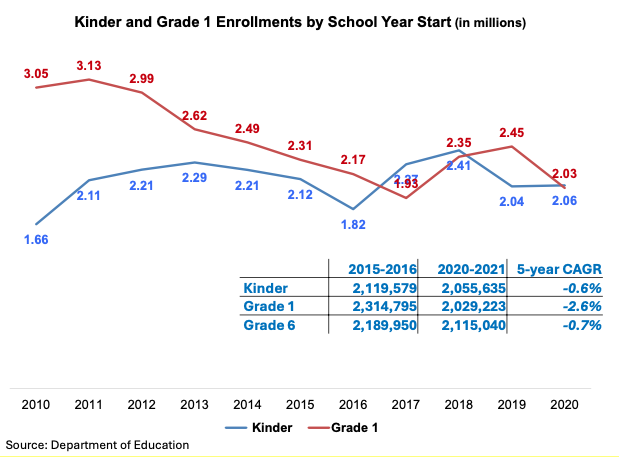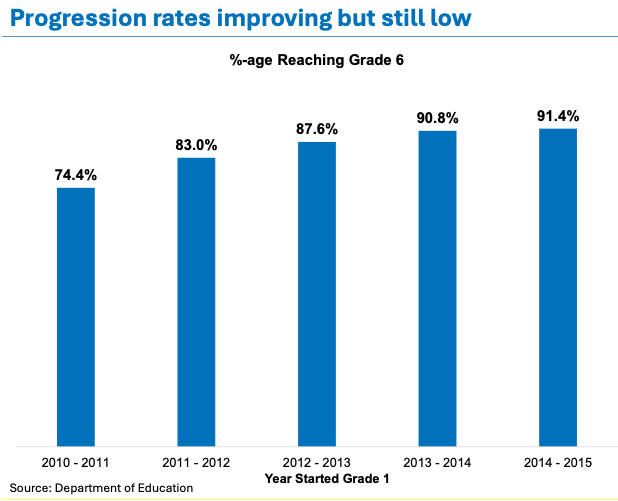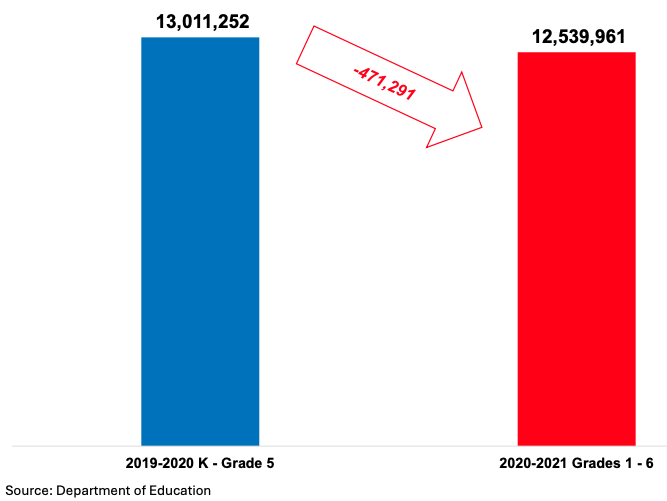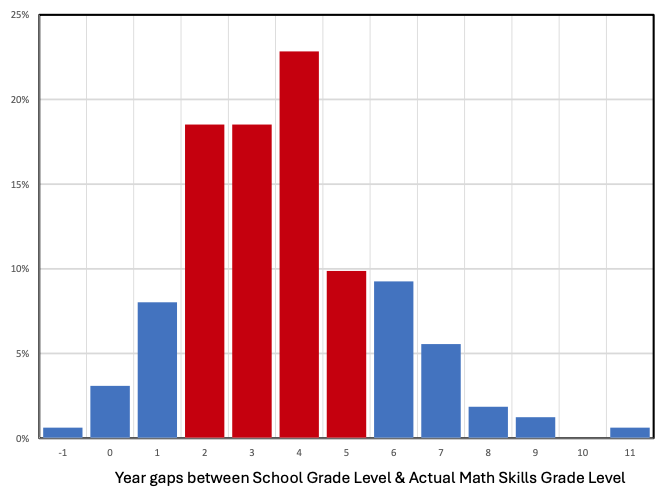As the first batch of students who have gone through the entirety of the K-12 program are about to graduate, it is worrying to note that 4 of the 10 who started that journey will not be able to graduate from Grade 12. The fall off can be observed all throughout this education pipeline. For the 6 who will complete the program, the jury is still out as to the quality of the education that they have received. Unfortunately, the initial signs do not appear promising.

- Grade 1 enrollments for SY 2021-22 were recorded at 2.03 million students and have fallen at a CAGR of 2.6% in the past 5 years
- Kindergarten enrollments exceeded Grade 1 enrollments in SY 2021-2022 for only third time in the past 10 years but have also fallen at a CAGR of 0.6% in the past 5 years
- This trend should continue in the long run reflecting the overall decline in birthrates

- Grade 1 enrollments for SY 2021-22 were recorded at 145,822 students and have fallen at a CAGR of 3.0% in the past 5 years
- Kindergarten enrollments exceeded Grade 1 enrollments in SY 2021-2022 for only the second time in the past 10 years but have also fallen at a CAGR of 1.8% in the past 5 years
- This trend should continue in the long run reflecting the overall decline in birthrates
85% reach Grade 6, over 2 million students unable to finish

- 85%* of students entering Grade 1 manage to reached Grade 6 from this sample of the last 5 graduating Grade 6 classes
- The total number of students who were not able to finish Grade 6 numbered 2,065,349 or 15.2% who started Grade 1
* 88% in Western Visayas ** 118,279 or 11.6%

- Progression rates in the primary stages have been improving reaching 91.4% in SY 2020-21

Significant number of students unable to finish Junior High School

- Only 6 in 10 students reach Grade 10
- The Junior High School Class of 2020 will be the first to have gone through the entire K-12 program
- A 40% attrition rate does not speak well for the program; underlying causes of attrition need to be looked at further

Quality of education difficult to assess due to lack of publicly available data
- National Achievement Test scores are not easily accessible
- 2022 PISA (Program for International Student Assessment) scores will be released in December. This should serve as an indicator of the progress (or the lack thereof) of Philippine students.
- In the 2018 PISA (the last conducted), Philippine students ranked at the bottom of all the test areas.

Close to 500,000 students from Kinder to Grade 5 not enrolled post-pandemic

- There was a total enrollment of 13 million in SY 2019 – 2020 from Kinder to Grade 5
- For SY 2020 – 2021 enrollment for Grades 1 to 6 was only 12.5 million
- The historical attrition from year to year has been between 0.5% to 1.0%. The SY 2020 – 2021 attrition is 3.6%, more than 3x the norm.
- Where are the close to 500,000 students expected to move up?

After-school Program Case Study: Gap in Reading Proficiency
- 92% of students enroll to improve on school performance in Reading;
- 75% of enrollees from ages five to 15 are two to five years behind on Reading Proficiency;
- 59% of enrollees are only transitioning from visual reading (perceiving words as pictures) to phonetic reading (understanding sounds of vowels and consonants) and reciting short sentences.

After-school Program Case Study: Gap in Math Proficiency
- 89% of students enroll to improve on school performance in Math;
- 70% of enrollees from ages five to 15 are two to five years behind in math skills;
- 28% of enrollees are still learning basic addition;
- Another 28% of enrollees are learning basic number sequencing.

Learning Poverty

Learning Poverty means being unable to read and understand a short, age-appropriate text by age 10. All foundational skills are important, but we focus on reading because: (i) reading proficiency is an easily understood measure of learning; (ii) reading is a student’s gateway to learning in every other area; and (iii) reading proficiency can serve as a proxy for foundational learning in other subjects.
Learning Poverty in Philippines is 55.9 percentage points higher than the average for the East Asia and Pacic region and 30.1 percentage points higher than the average for lower middle-income countries.
LEARNING POVERTY IN PHILIPPINES
- Learning Poverty. 90 percent of children in Philippines at late primary age today are not proficient in reading, adjusted for the out-of-school children.
- Learning Deprivation. Large-scale learning assessments of students in Philippines indicate that 90 percent do not achieve the MPL at the end of primary school, proxied by data from grade 5 in 2019.
- Schooling Deprivation. In Philippines, 5 percent of primary school-aged children are not enrolled in school. These children are excluded from learning in school.
Discussion Insights
- Focus on reading proficiency in teacher training
- School curriculum is a problem, does not promote subject mastery
- Transparency in student performance
- Need to have consistent appraisal and measurement of student performance required